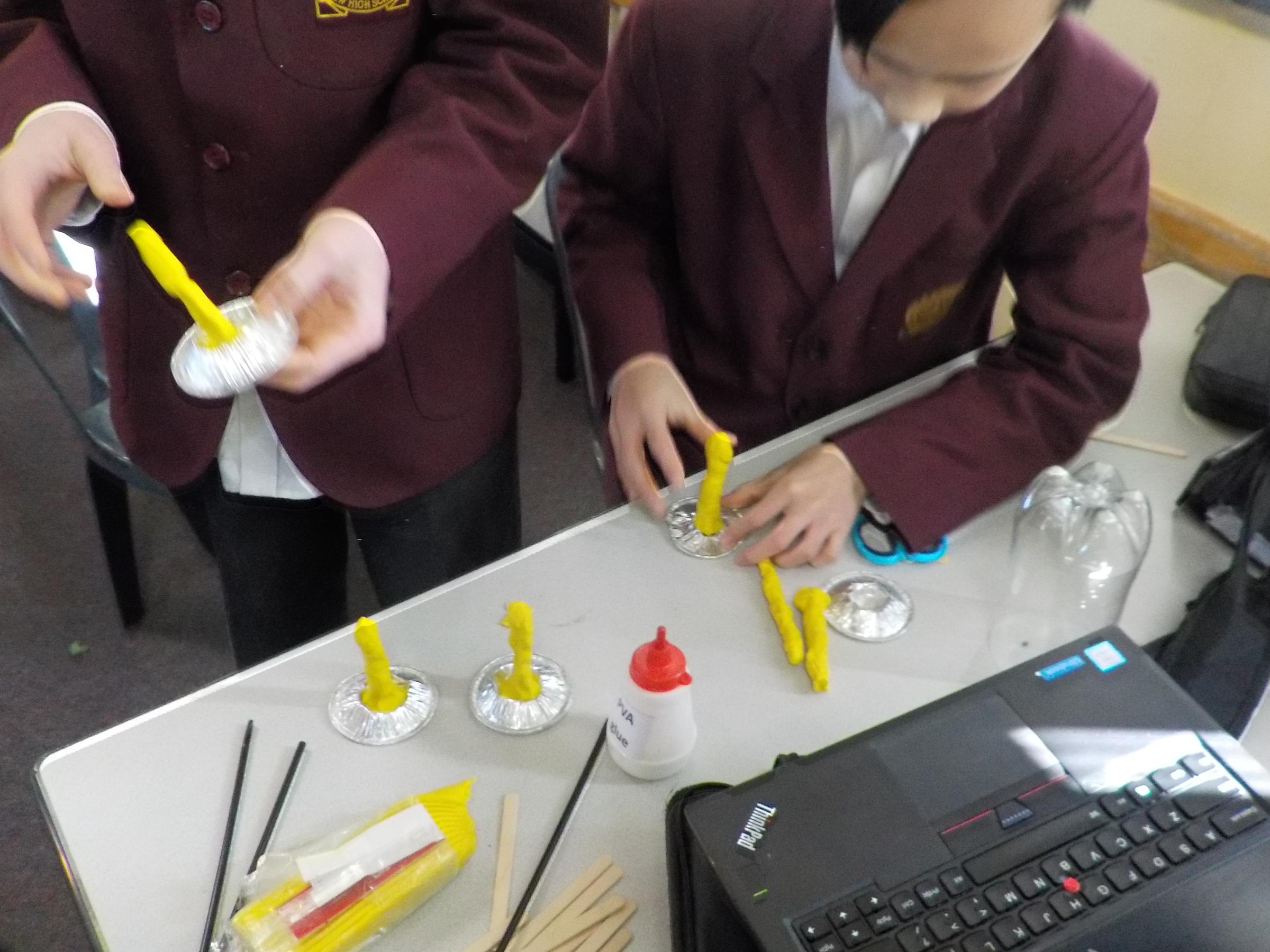FLOOD RESISTANT HOUSING

Science Week 2018
During this years Science Week, Year 7 students built houses that were (hopefully) resistant to flooding. The task was to build a model house that could withstand 5cm of "flood water" (water in a tub). However, there were only certain amounts of materials that were available for use, such as icy pole sticks, aluminium foil, plasticine, Lego bricks, grass or leaves, cling film, plastic bottles, food trays, paper straws, tree bark, mud or clay and plastic binder sheets.
Our group had used past knowledge of houses that can withstand flooding and built our house on stilts. The stilts that we used were made of plasticine, and were a height of approximately 7 cm (2cm above the water line during the flood). We used straws and plasticine to build a strong base for our house of stilts. In modern houses, wood is crossed over to make a frame for the house. We did the same, but we used straws instead of wood. Then we made a floor of popsicle sticks stuck together using a hot-glue gun. We covered the rest of the house using aluminium foil which was water proof and worked well as a roof. We forgot to add a few parts to our house, but it was still a very good model (which did resist the flood) which cost us under $400.
By the end of the activity, our group was very happy with how our design worked because it withstood the "flood". Nobody else had the idea of using stilts to raise the house above the water, this did very well compared to other groups because they tried to make the whole house sit on the bottom of the "flood-water". We enjoyed the task because it was a good engineering challenge that educated us about thinking outside the box in a fun way.
Luke Allen, Lachlan McConnell and Ketav Shah
Year 7 Students






